Lion Dances for Good Luck
A dancing lion in Japan attracts your attention.
At first you may not recognize it as a lion. It could be a flying dragon, not a leaping lion. The lion dances around the new year in Japan to push away evil spirits and bring good luck. It runs, vaults, spins and lands to the music of flutes and drums. It suddenly bounds into the crowd to bite heads. The Japanese call the lion dance shishi-mai or shiahi-odori. Japan adapted the lion dance from China in ancient times. Lion dancing is now a practice of Shinto, a faith and way of life unique to the Japanese people. Also read our article on Lion Dancing .
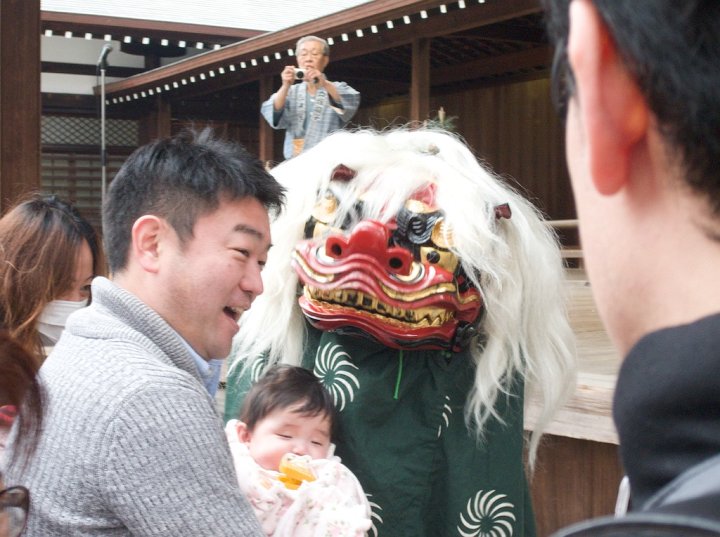
A man raises up his baby girl to the dancing lion. The lion bites her head, then that of her dad. As a result they both can expect good luck for the coming year. This is a lion dance at Yasukuni Shine, Tokyo, Japan.
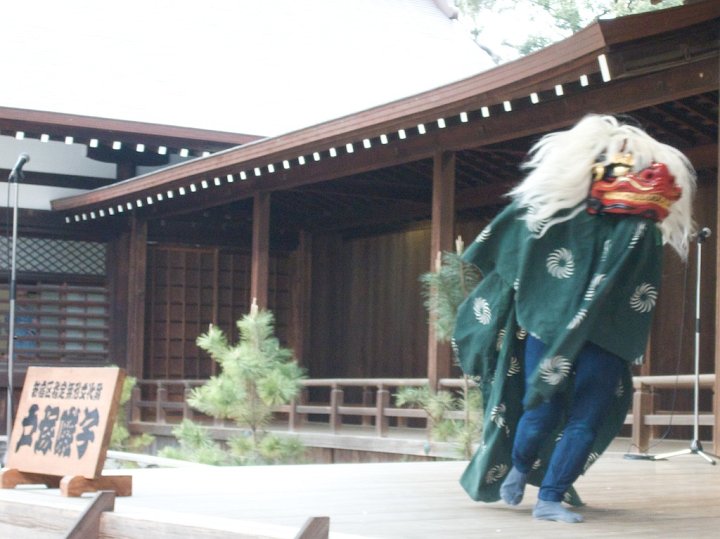
During a lion dance celebration, a Japanese feline races on two feet while chasing away evil and bringing good luck to the visitors of Yasukuni Shrine, Tokyo, Japan. Lion dances occur at times of new beginnings.
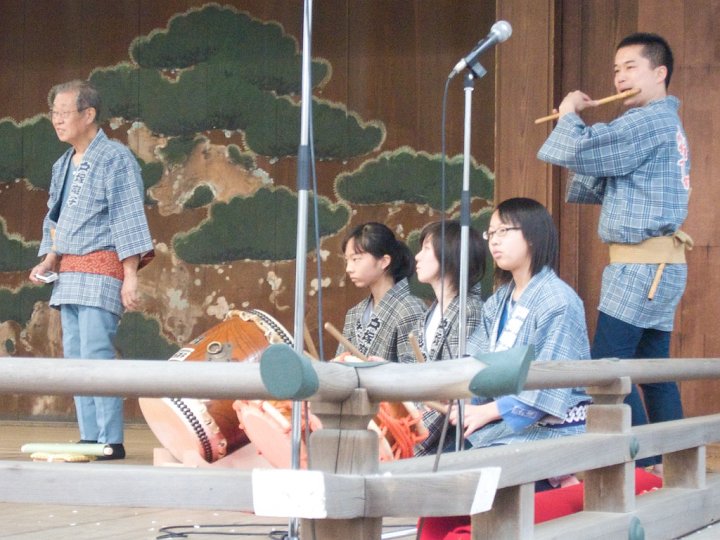
Flute and drum musicians play for a lion dance at Yasukuni Shrine, Tokyo, Japan. The lion races, leaps and lands to the beat of drums.
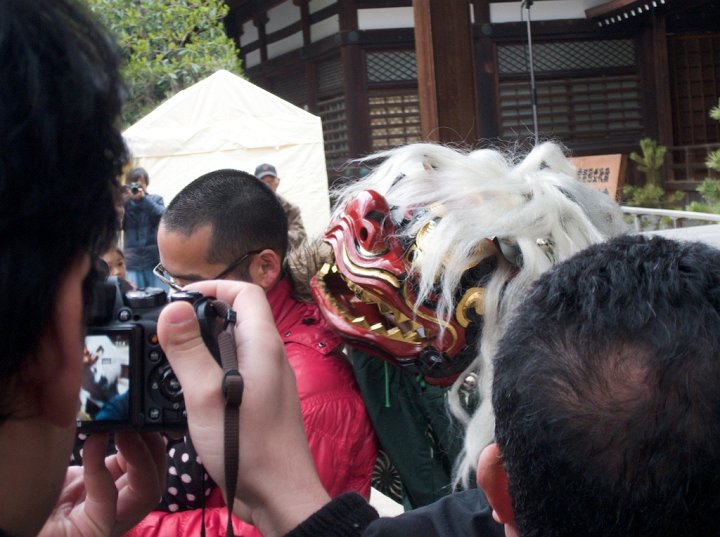
A Japanese Lion, shishi, approaches a man from behind while dancing at Yasukuni Shrine in Tokyo, Japan. According to Shinto belief lion dances drive away evil spirits and bring good luck to those who receive a bite on the head. Shinto is the indigenous religion and belief system of Japan.
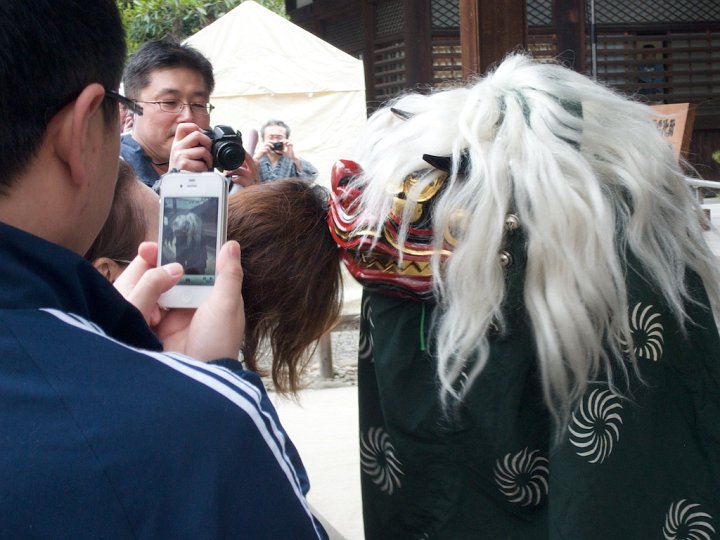
A protector lion bites the head of a female visitor to Yasukuni Shrine, Tokyo, Japan. While the lion stalks its prey to the beat of drums, its bite causes no injury. Instead, it brings good luck and happiness to its volunteer victims. This lion dances during celebration days of new beginnings when cherry blossoms color Japan.
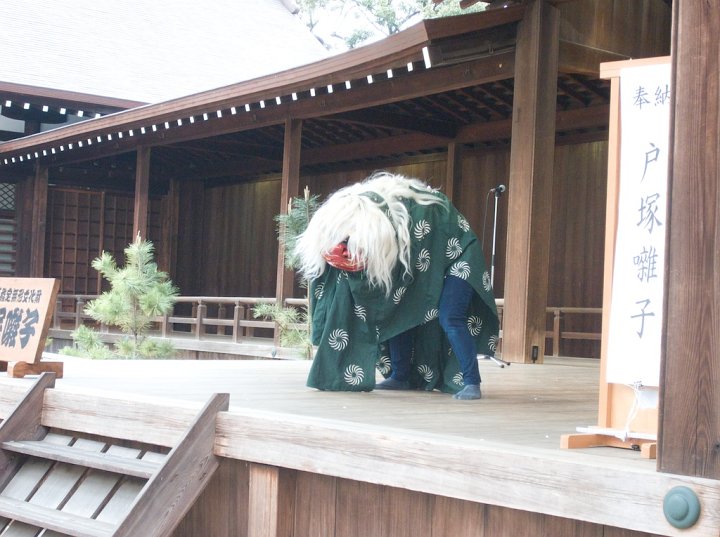
A Japanese dancing lion bows to the audience after completing a lion dance. The lion dances to flute and drum music while driving off evil spirits and dispensing good luck. This lion dances at Yasukuni Shine, Tokyo, Japan.
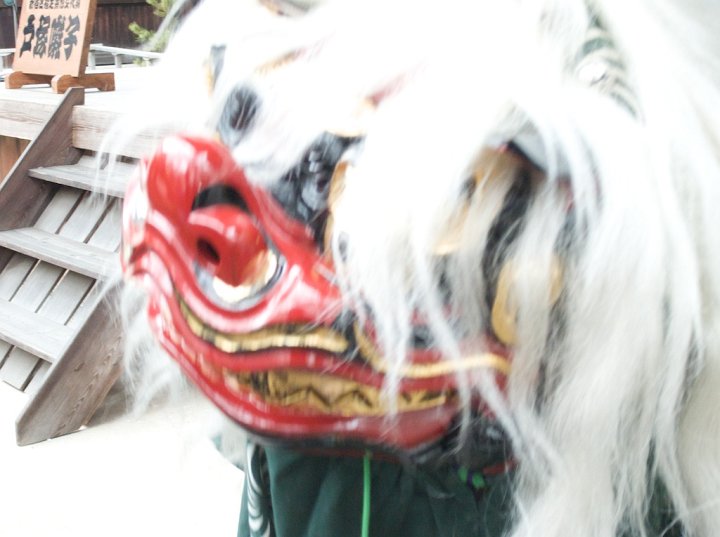
Moving fast and close-up during a lion dance, the large feline blurs for the camera while driving off evil spirits and bringing good luck. Lion dances normally happen during times of new beginnings. They occur in early January and in sakura days, when cherry blossoms initiate another season of new beginnings.
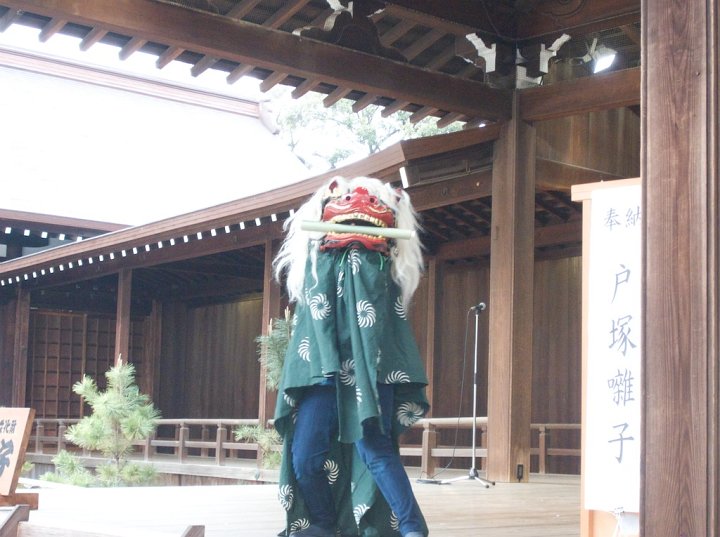
Picking up a scroll in its mouth, this Japanese lion prepares to share a message of good fortune during a lion dance. Japan adapted the lion dance from China during ancient times. Shinto belief now embraces lion dances for their power to drive off evil spirits and bring good luck.
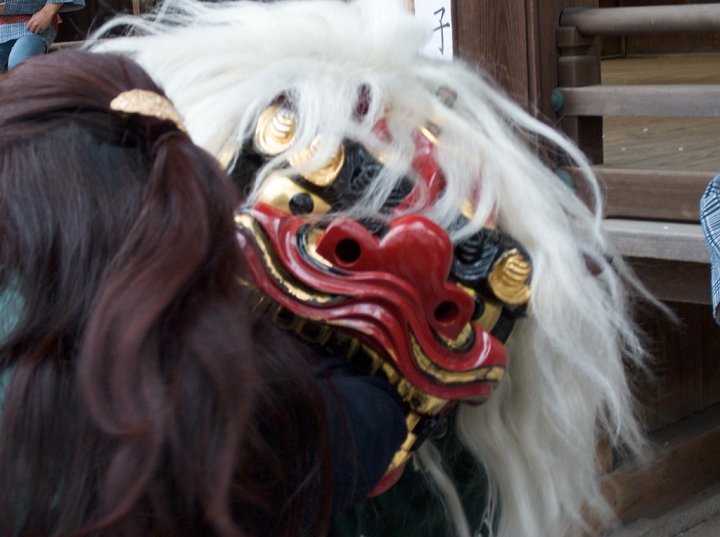
A woman with clean, brushed and styled hair offers her shoulder to a Japanese lion during a lion dance at Yasukuni Shrine. While lion bites to the head bring good luck, this female lion understands the situation and delivers good luck through the right shoulder.
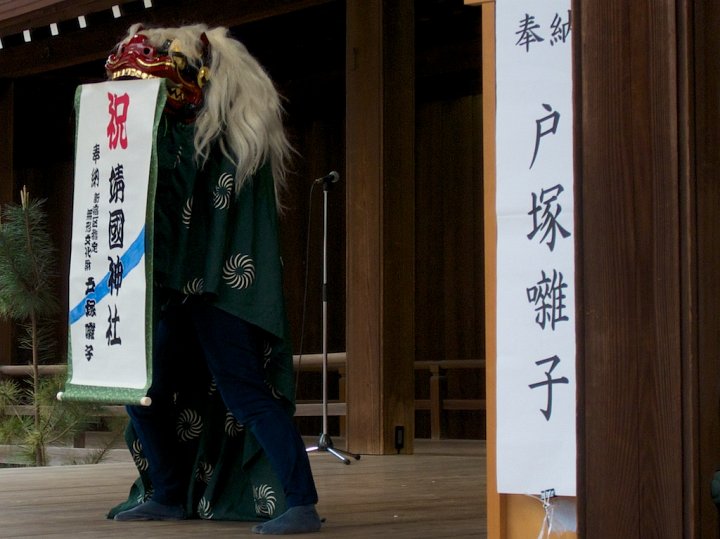
Toward the end of a lion dance, the lion picks up a scroll with its mouth--a pretty difficult task--and unrolls a message of good luck. This lion dances at Yasukuni Shrine, Tokyo, Japan.
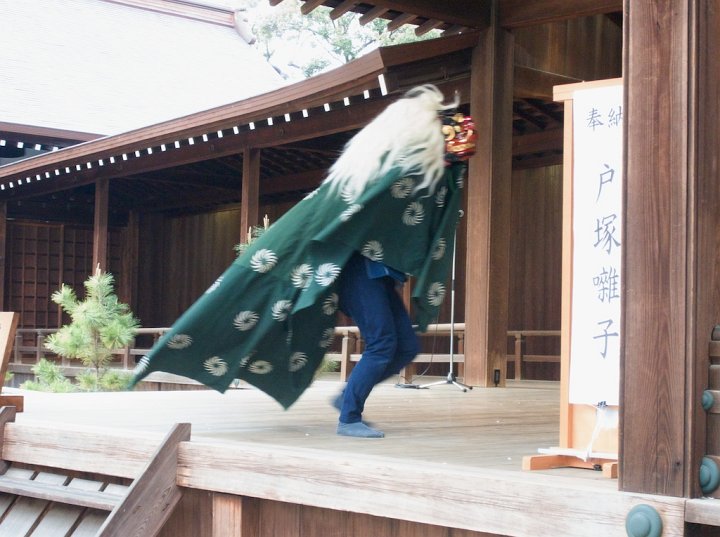
After performing a Japanese lion dance, the lion leaves the stage. On the way out, the lion removes its costume and reveals itself as a little more than somewhat athletic human female.
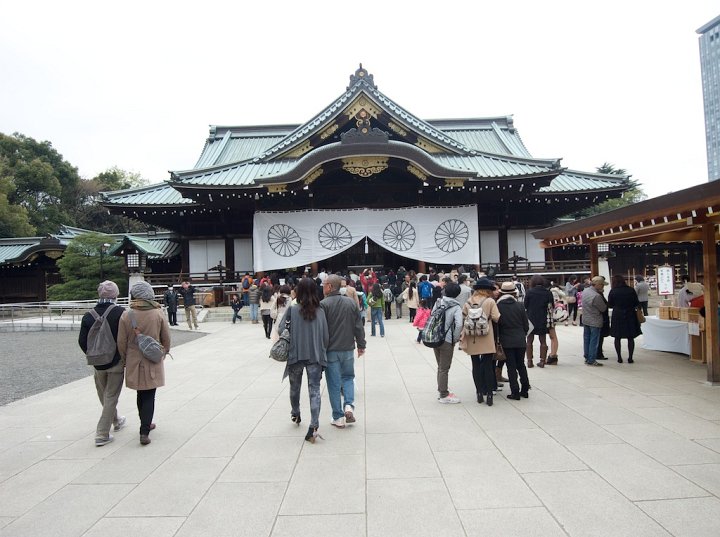
This is where the Japanese lion dances. Other lions dance at other shrines all over Japan. Large lions wear their costumes over two humans, giving the lions four legs each. Yasukuni Shrine sits in Central Tokyo near the Imperial Palace. It was founded in 1869 to enshrine the spirits of Japanese war dead. It received its current name in 1879.